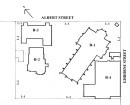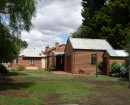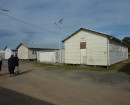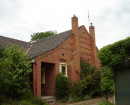Back to search results
EDI-CHESHUNT TURQUIOSE FIELD 1
ROSE RIVER ROAD CHESHUNT, WANGARATTA RURAL CITY
EDI-CHESHUNT TURQUIOSE FIELD 1
ROSE RIVER ROAD CHESHUNT, WANGARATTA RURAL CITY
All information on this page is maintained by Heritage Victoria.
Click below for their website and contact details.
Victorian Heritage Inventory
-
Add to tour
You must log in to do that.
-
Share
-
Shortlist place
You must log in to do that.
- Download report
On this page:
Statement of Significance
This record has minimal details. Please look to the right-hand-side bar for any further details about this record.
Show more
Show less
-
-
EDI-CHESHUNT TURQUIOSE FIELD 1 - History
Contextual History:History of Place:
Heritage Inventory History of Site:
The turquoise discovered in the district in 1887 was believed to be the first found in Australia. Eighteen months later, the deposit had been traced for 22 km from the discovery site 'on the east boundary of Norton's selection' - 16 km up the King River above Edi, and about 3 km east of the river. Samples of the stone sent to England and Germany for valuing in 1889 drew a favourable report, and thereafter the Edi turquoise was largely exported to those countries for use in ornamental inlays (for example, in the panels of top-of-the-range pianos) and cameo cutting. (It was claimed that jewellers in Victoria spurned the local stone.) The turquoise of the district was described as 'of an exquisite blue, which maintains its perfect colour, and is said to equal the best Persian stone'.
In 1893, eight localities were being worked for turquoise between Edi and Cheshunt, by open-face cuttings (often with a shaft at one end) or tunnelling into the hillside. Early this century, turquoise mining was also underway near Greta South, to the west of Edi. By 1912, P.C. Gascoigne (the Edi field's main prospector and promoter) had mined just 3000 carats (0.6 kg) of saleable stone. It appears that turquoise mining ceased in the district in about 1921, after Gascoigne failed to get government backing to develop his mine. An exploratory survey in the 1960s concluded that the turquoise deposits were not commercially viable.
Since the 1960s, the district has been subject to fossicking by lapidary enthusiasts. Access to the turquoise deposits has been curtailed since a renegade rockhound blasted open a hill face with explosives in the early 1970s.
References:
Birch, W.D. & Henry, D.A. (eds), Phosphate Minerals of Victoria, Special Publication No. 3, Mineralogical Society of Victoria, Melbourne, 1993, pp. 83-90
Dunn, E.J., report in Mining Surveyors' Reports, December 1888Heritage Inventory Description
EDI-CHESHUNT TURQUIOSE FIELD 1 - Heritage Inventory Description
Newman, Gascoigne & party (Locality No.1) On the crest of a ridge, the most southerly and probably the largest working (60 m wide x 15 m deep). Impressive large workings are still visible.
Recorded By: Birch & Henry, Mineralogical Society of Victoria Date recorded: 1993
-
-
-
-
-
EDI-CHESHUNT TURQUIOSE FIELD 1
 Victorian Heritage Inventory
Victorian Heritage Inventory -
EDI CHESHUNT TURQUOISE FIELD 2
 Victorian Heritage Inventory
Victorian Heritage Inventory
-
-






